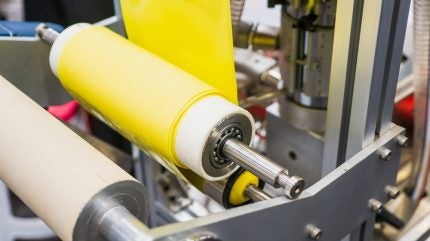
While biodegradable plastics and recycling technologies have received widespread attention, a quieter revolution is taking place in the form of plant-based coatings for plastics.
These innovative coatings offer a promising way to reduce the environmental impact of plastics without sacrificing their versatility or performance.

Discover B2B Marketing That Performs
Combine business intelligence and editorial excellence to reach engaged professionals across 36 leading media platforms.
At the intersection of materials science and environmental responsibility, plant-based coatings are emerging as a viable means to create more eco-friendly plastic products.
Derived from renewable resources like starch, cellulose, chitosan, and plant oils, these coatings are designed to enhance plastic functionality while improving its sustainability profile.
As industry and consumers alike lean towards greener solutions, this technology is poised to play a vital role in the future of plastic production.
What are plant-based coatings and how do they work?
Plant-based coatings are natural substances applied to plastic surfaces to improve their barrier properties, biodegradability, or aesthetic appeal. These coatings typically come from agricultural by-products or plant-derived polymers.

US Tariffs are shifting - will you react or anticipate?
Don’t let policy changes catch you off guard. Stay proactive with real-time data and expert analysis.
By GlobalDataExamples include starches from maize or potatoes, cellulose from wood pulp, and proteins from soy or wheat gluten. Rather than altering the core structure of the plastic, these coatings act as a skin—enhancing features such as moisture resistance, UV protection, or even antimicrobial qualities.
One of the main advantages of plant-based coatings lies in their versatility. For instance, a thin layer of chitosan—a polysaccharide derived from crustacean shells and fungi—can be applied to food packaging to prevent bacterial growth, reducing spoilage and waste.
Starch-based coatings, on the other hand, are widely used in agricultural films and mulch films, where biodegradability is paramount.
Many coatings are designed to be compatible with industrial composting systems, enabling the plastic material to break down more easily after use.
In some cases, they can even render certain petroleum-based plastics more recyclable by improving their surface characteristics or facilitating separation from other materials during the recycling process.
Commercial applications and industry uptake
Over the past decade, several industries have started integrating plant-based coatings into their products, with food packaging being at the forefront.
The food industry, under pressure to reduce single-use plastic waste, has shown considerable interest in bio-based solutions that are safe for contact and offer effective barriers against oxygen and moisture. Coated trays, cups, wraps, and films are becoming more common on supermarket shelves.
One notable example comes from Scandinavian packaging firms that have pioneered the use of cellulose coatings derived from sustainably harvested forests. These coatings can replace conventional polyethylene linings in paper cups and cartons, which are notoriously difficult to recycle due to their plastic-paper composition.
Cosmetic companies are also embracing this green shift. By adopting plant-based coatings on plastic containers, they aim to reduce microplastic shedding and improve recyclability while maintaining product integrity.
In agriculture, biodegradable plastic mulch films coated with starch-based materials are designed to degrade naturally in the soil, eliminating the need for costly and labour-intensive removal after harvest.
Yet, uptake is not without its challenges. Scalability, cost, and performance consistency remain significant hurdles. Many bio-based coatings perform well under laboratory conditions but struggle to meet the demands of large-scale manufacturing or harsh environmental exposure.
To overcome this, researchers and companies are collaborating to refine formulations, enhance durability, and streamline production methods.
The future of plastic in a circular economy
As the circular economy model gains traction worldwide, plant-based coatings could be instrumental in making plastics more sustainable. These coatings contribute to a materials ecosystem where resources are reused, waste is minimised, and environmental damage is significantly reduced.
One promising area of development is the integration of these coatings with recycled plastics. Typically, recycled plastics suffer from inferior performance compared to virgin materials, particularly in terms of moisture or gas barriers.
Bio-based coatings can help bridge this gap, making recycled plastics suitable for more demanding applications such as food contact or medical packaging.
Moreover, plant-based coatings can enable the development of mono-material packaging—products made from a single material type that are far easier to recycle. In many existing packages, multi-layer constructions involve mixed plastics or plastic-aluminium combinations that complicate recycling. By applying a functional bio-coating to a single plastic type, manufacturers can maintain performance while simplifying end-of-life processing.
With governments around the world implementing stricter regulations on plastic usage and waste, the role of innovative solutions like plant-based coatings will only grow.
Research continues into next-generation coatings made from algae, mushroom-based compounds, and even by-products of food processing, aiming for improved sustainability and reduced production impact.
Final thoughts
Plant-based coatings for plastics represent a crucial evolution in our relationship with synthetic materials. They provide a bridge between the performance demands of modern plastic products and the pressing need for environmental responsibility.
While the technology is still evolving, the potential benefits—ranging from enhanced recyclability and biodegradability to reduced carbon footprints—make it an exciting area to watch.
As awareness grows and innovation accelerates, plant-based coatings could help rewrite the future of plastic, transforming it from an environmental burden into a more sustainable resource.
The journey is ongoing, but with each biodegradable film and compostable package, we’re one step closer to a greener, cleaner planet.





